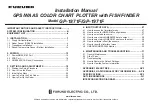
8.Features
© 2023 China Daheng Group, Inc. Beijing Image Vision Technology Branch 95
Example 1: Setting the trigger delay value to 1000ms, and the trigger signal will be valid after 1000ms
delay, as shown in Figure 8-2.
Input Signal
Trigger Delay
Valid Signal
Delay Time
1000ms
Figure 8-2 Trigger delay schematic diagram
4)
Input Inverter
The signal level of input lines is configurable for the camera. The user can select whether the input level
is reverse or not by setting "LineInverter".
The default input line level is false when the camera is powered on, indicating that the input line level is
not reversed. If it is set as true, indicating that the input line level is reversed. As shown in the Figure 8-3:
Input Signal
Input Line
LineInverter=
False
Input Line
LineInverter=
True
Figure 8-3 Setting input line to reverse
8.1.2.
Output Mode Operation
1)
Configuring Line as output
The camera’s Line1 is a uni-directional opto-isolated output I/O, Line2 and Line3 are bi-direction
configurable I/Os.
The Line1 is camera's default (Line2 is the default if the camera does not support Line1) output when the
camera is powered on. Line2 and Line3 can be configured to be output by changing the "LineMode" of this
line.
Each output source of the three output lines is configurable, and the output source includes: Strobe,
UserOutput0, UserOutput1, UserOutput2, ExposureActive, FrameTriggerWait, AcquisitionTriggerWait,
Timer1Active. And ExposureActive, FrameTriggerWait, AcquisitionTriggerWait and Timer1Active are
supported by partial models only.
The default output source of the camera is UserOutput0 when the camera is powered on.
What status (high or low level) of the output signal is valid depends on the specific external circuit. The
following signal diagrams are described as examples of active low.
















































